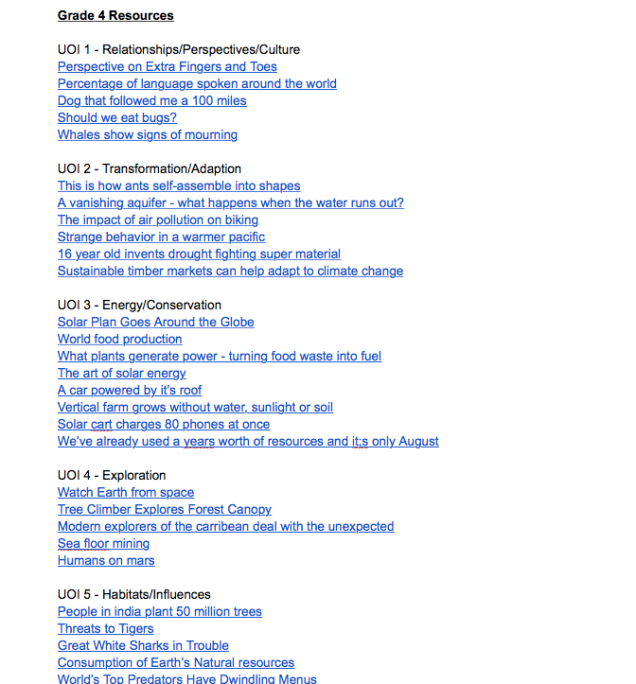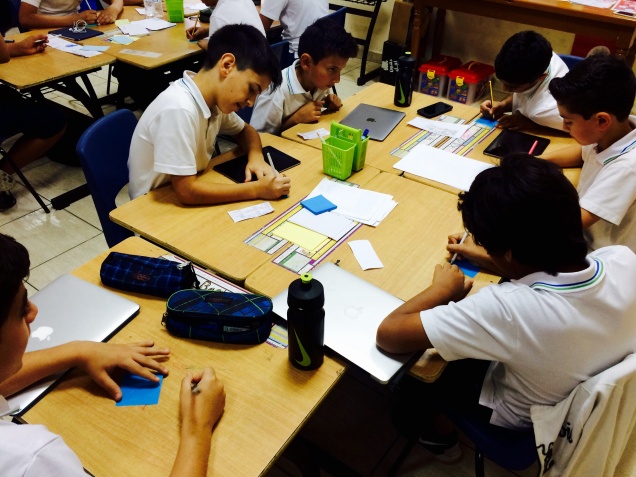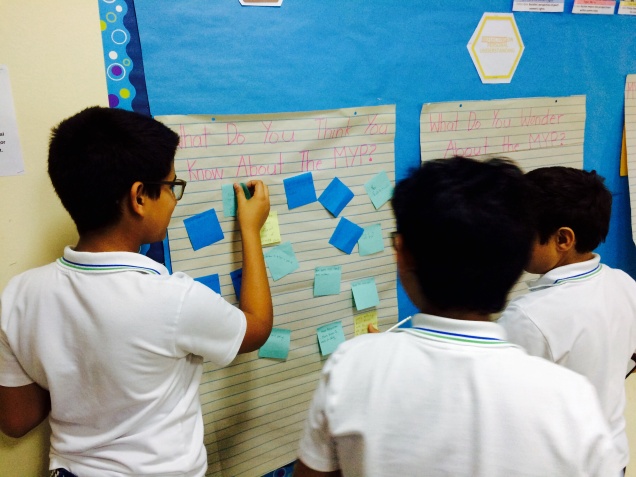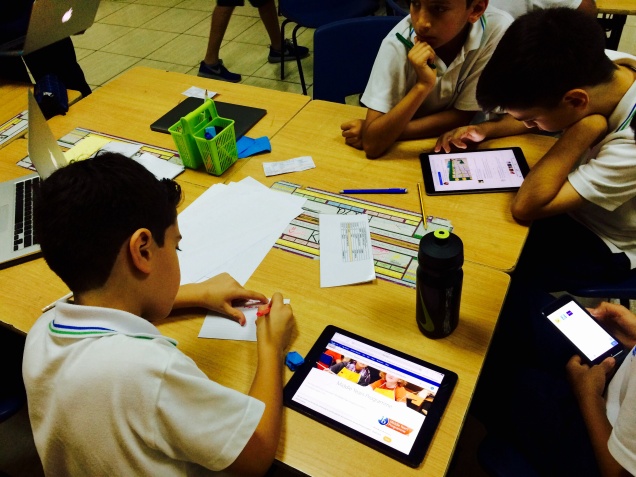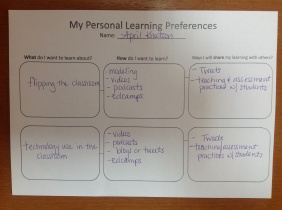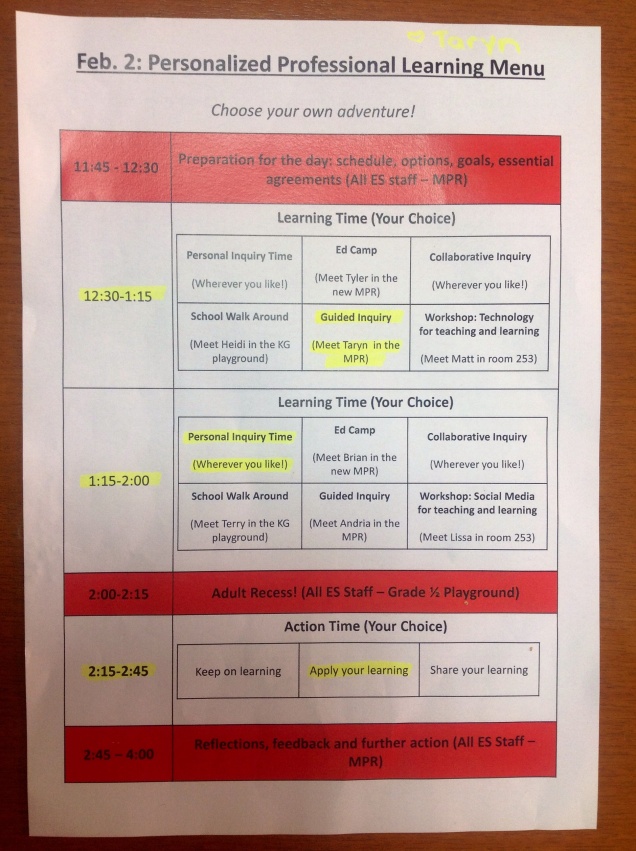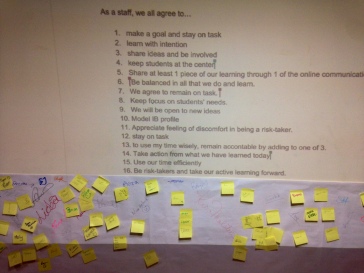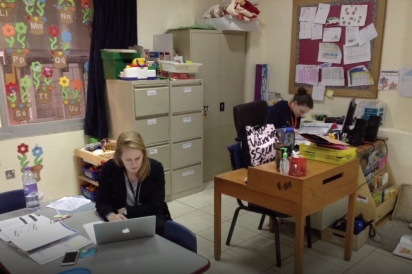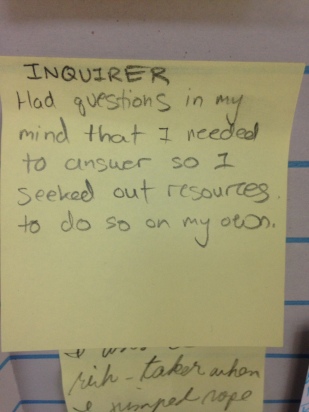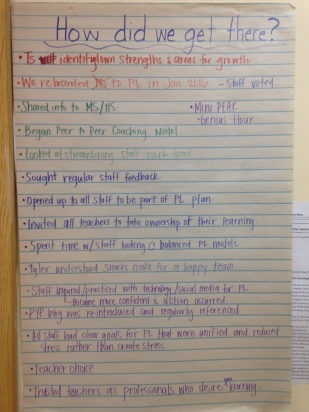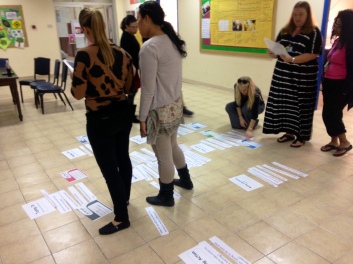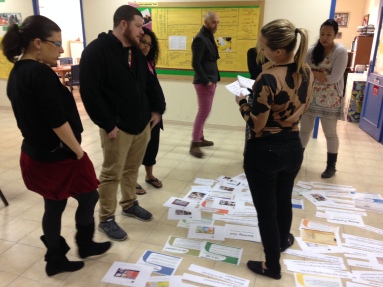A few months ago, my partner in crime and I had a crazy idea to design a model of Personalized Professional Learning that would hopefully model for our staff, what we expect to see in their classrooms. Our first attempt at PPL went really well and we received awesome feedback from our staff – but we wanted to challenge ourselves to reflect, refine and improve the model further.
Our biggest area of self-identified growth was linking everyone’s personalized learning to our School Improvement Plan goals and our PYP Action plan goals. When reflecting on our first iteration of PPL, we realized we had modelled open-inquiry. We asked our staff “What do you want to learn about” and we structured an afternoon to support those goals. However, open-inquiry is often a luxury teachers -and we’ve come to discover – administrators do not have. Teachers have curriculum goals that students need to meet and administrators have school improvement plan and IB program action plan goals that staff need to meet. Thus bringing to light our challenge when designing the second iteration of PPL – how can we design a half day of personalized professional learning that is inquiry-based, differentiated, built on learner voice and choice… but still guides our staff towards meeting our school and program goals?
Here is how we went about it:
Step 1 – Rethinking and reorganizing topics of learning interests
Last time, our staff collectively built a learning menu that listed many different topics 21st Century teachers are learning about – maker space, play, e-portfolios, etc.

We realized that many of those topics ALREADY contribute to our School Improvement Plan (SIP) goals and IB Action Plan (IBAP) goals – we just needed to make the connections more explicit. So our 8 person leadership team sat down and re-organized the menus by SIP goals and IBAP goals. This resulted in new learning menus that had all the same staff-selected topics of interest, but organized in a more purposeful way.
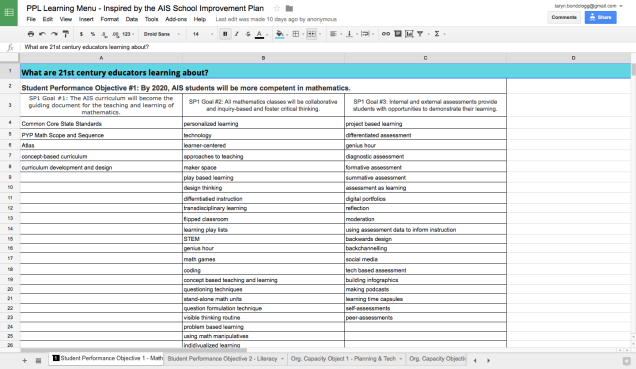

Step 2 – Reflecting on our last afternoon of PPL
At our school, we advocate for “no secret teacher business”, which means we also need to model “no secret leadership business”. So we were honest, vulnerable and transparent with our staff. We openly reflected on both the strengths an areas of growth of our first attempt at PPL. We admitted that we had used a model of open inquiry, and we were clear that next time we wanted to implement a model that was more guided and informed by our SIP and IBAP. To get our staff to begin to think of PPL in this way, we did an activity where everyone reflected on what they learned about during our first attempt at PPL and tried to retroactively find a connection to our School Improvement Plan or PYP Action Plan. We posted goals from our SIP and IBAP around the room and gave stickers to all staff to post based on goals that connected to what they had learned about on our last half day.

We shared with our staff, that even though it was great that so much of our learning accidentally contributed to our SIP and IBAP, this time we wanted to ensure that our PPL purposefully contributed to our school and program goals.
Step 3 – Purposefully planning for our upcoming half day of PPL
Similar to last time, we wanted to give our staff some time to think about what they would learn, how they would learn and how they would share their learning for our upcoming half day – the difference being this time, we wanted their “what” to be linked to either a School Improvement Plan goal or PYP Action Plan goal. In order to do this, we used an after school staff meeting to give staff time with our newly organized learning menus to think about how they might to spend their upcoming half day. Each staff member took a few small colour squares and wrote down what they wanted to learn, how they wanted to learn and how they planned to share their learning with others.

Then, they had to post their squares on bulletin boards that we had divided up based on our School Improvement Plan and PYP Action plan.
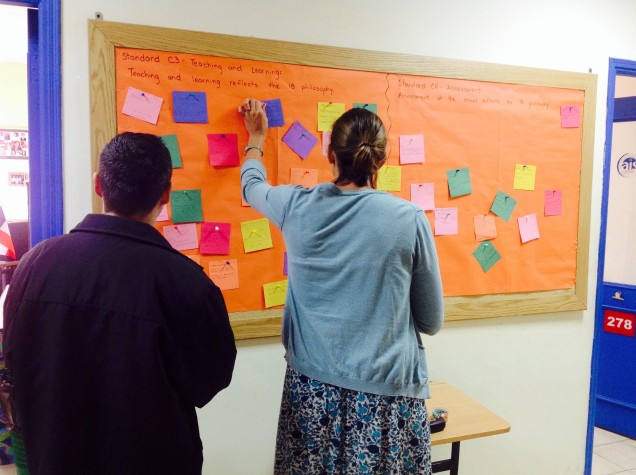
This allowed everyone on staff to not only be purposeful about what they wanted to learn and how it contributes to school and program goals, but it was also a great way to allow everyone to see what everyone else was interested in learning about on the upcoming half day.


Step 4 -Planning in response to learning
Similar to last time, our leadership team wanted to plan the structure of the half day based on the learning needs and interests of the staff. In order to do this, we looked at our bulletin boards and recorded how staff wanted to learn and what specifically they wanted to learn about.

We analyzed the data, specifically paying attention to numbers and trends in order to figure out how best to structure our half day of personalized professional learning. This approach revealed that most of our staff was interested in personal inquiry and collaborative inquiry and some of our staff was interested in workshops, mainly about math, literacy and technology. This allowed us to build a structure for our half day that was representative of our learners’ needs and interests.

Step 5 – Let the learning happen
On our half day, we gathered as a whole staff to review the structure of the day, review our essential agreements and set personal goals.

Then we just stepped back and let the learning unfold. It was amazing to see some staff attend workshops, some staff inquiring collaboratively and other staff pursuing areas of personal exploration.

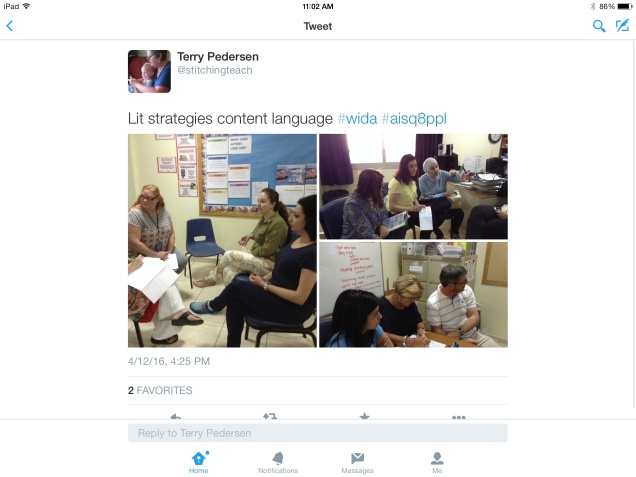

OF COURSE, we kept adult recess which proved to be one of the day’s highlights again!


And we finished the day reflecting on what we learned and how we learned.

Step 6 – Track the learning
Always, at the end of professional development, we collect feedback from our staff about what went well and what could be improved for next time. In addition to feedback, this time we wanted to collect some data about the learning that took place as well and specifically how it contributed to our School Improvement Plan and PYP Action Plan.
We collected data on what staff learned:


We collected data on how staff learned:


We collected data on how staff shared their learning with others:

We collected data on how staff’s learning contributed to our School Improvement Plan goals:


We collected data on how staff’s leaning contributed to our PYP Action Plan goals:


Once all the data was collected and organized, we made a display to ensure that our whole learning community could see the stats about our half day of personalized professional learning.

All in all, I think it was a success! It felt good to find the synergy between having all learners learning towards to a standard collection of goals, but allowing them to do it in a way that was relevant, significant, challenging and engaging for each them as individual learners. Again, we received an overwhelming positive response to our half day of PPL. When learners are thanking you for letting them learn and asking for more and longer opportunities to learn, hopefully that means we’re on the right track!




We still have lots of room to grow, so we would love to hear your thoughts and feedback on our model of Personalized Professional Learning!

